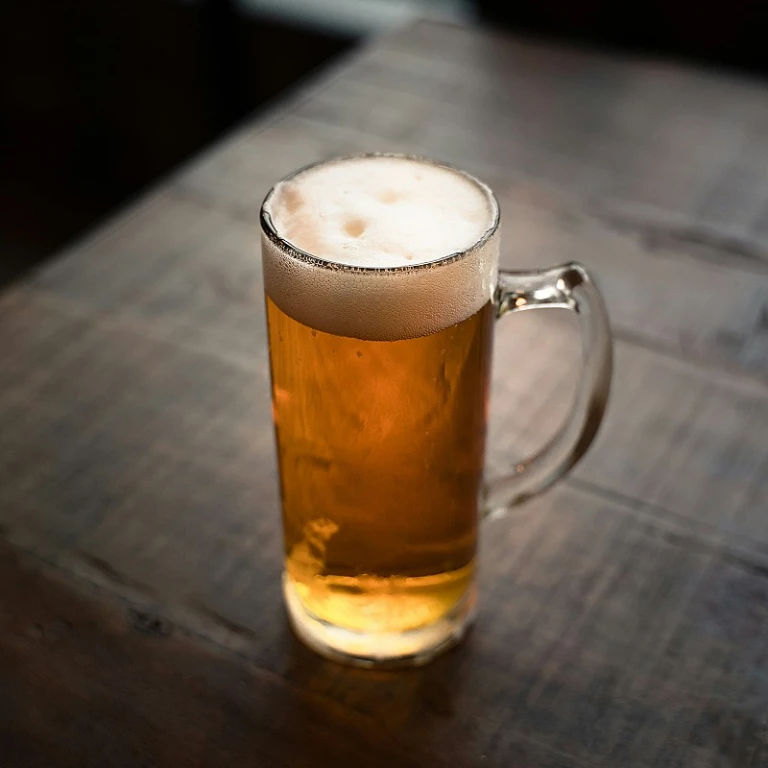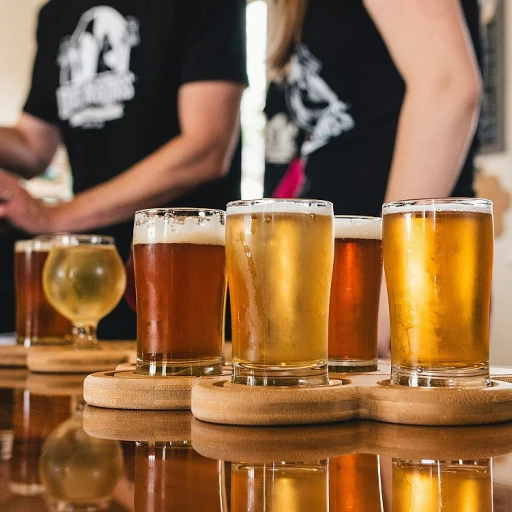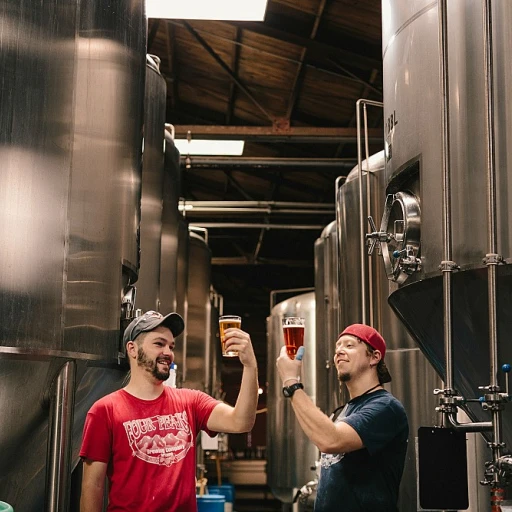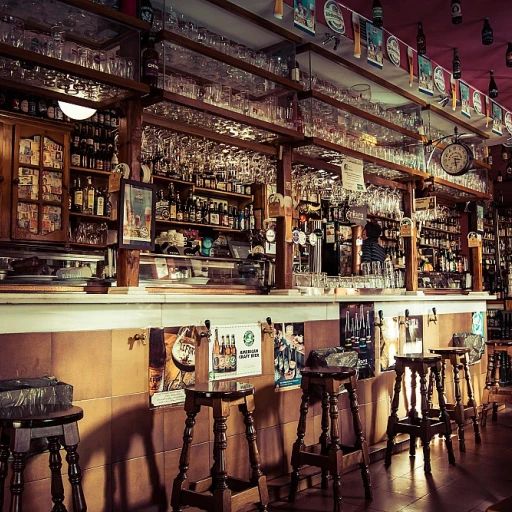
What makes cask ale different from keg beer
Understanding the unique character of cask ale
Cask ale stands apart from keg beer in several important ways, making it a favorite among traditionalists and beer enthusiasts alike. The key differences come down to how the beer is brewed, stored, and served.
- Natural conditioning: Cask ale is unfiltered and unpasteurized, allowing it to undergo a secondary fermentation in the cask. This process creates a natural carbonation, resulting in a softer, smoother mouthfeel compared to the sharper fizz of keg beer.
- Serving temperature and method: Unlike keg beer, which is usually served cold and under high pressure, cask ale is poured at cellar temperature (typically 11-13°C) and dispensed by hand pump or gravity. This brings out more subtle flavors and aromas.
- Freshness and variability: Because cask ale is a living product, it changes over time and must be consumed within a few days of tapping. Each pint can offer a slightly different experience, adding to its charm.
- Minimal intervention: Cask ale contains no added CO2 or preservatives, letting the true character of the ingredients shine through.
If you’re curious about the broader world of beer and how different styles compare, check out this guide to exploring beer styles for more insights.
How breweries keep the cask tradition alive
Brewing tradition: skills passed down through generations
For breweries, keeping the cask ale tradition alive is both a point of pride and a commitment to quality. Unlike modern keg beers, cask ales require careful handling and a deep understanding of fermentation. Brewers often rely on time-honored methods, using open fermentation vessels and allowing the beer to mature naturally in the cask. This process demands patience and expertise, as every batch can be subtly different depending on temperature, yeast, and even the wood of the cask itself.
- Manual craftsmanship: Each cask is filled, sealed, and conditioned by hand, ensuring the beer develops its unique character.
- Local ingredients: Many breweries source hops and malts from nearby farms, supporting local agriculture and adding regional flair to their ales.
- Community involvement: Some breweries invite the public to cask-tapping events, sharing the experience and fostering appreciation for the tradition.
Maintaining these practices isn’t always easy in a fast-paced industry. Yet, breweries that champion cask ale often find loyal followings among beer lovers who value authenticity and flavor. For a look at how unique brews can shape a brewery’s reputation, check out this story of a distinctive beer’s impact.
The experience of drinking cask ale
The sensory delight of a fresh pint
Enjoying cask ale is a unique experience that goes beyond simply drinking beer. When a pint is drawn from a hand-pulled pump, you immediately notice the gentle carbonation and a creamy, natural head. The beer is served at cellar temperature, which is slightly cooler than room temperature, allowing the full spectrum of flavors and aromas to shine through.
- Texture: Cask ale feels smoother and softer on the palate due to its natural conditioning.
- Aroma: The subtle carbonation helps release delicate malt and hop aromas, making each sip more inviting.
- Flavor: Expect a depth of taste that evolves as the beer warms in your glass, revealing layers of character that are often muted in colder, more carbonated keg beers.
Atmosphere and ritual at the pub
Part of the pleasure comes from the setting. Traditional pubs that serve cask ale often take pride in their cellarmanship and the care they put into each barrel. Watching the bartender pull your pint by hand is a ritual that connects you to the long-standing traditions of brewing and serving. This sense of heritage is similar to what you’ll find in breweries that honor their roots, such as those highlighted in this exploration of brewing heritage.
Social connection and conversation
Cask ale encourages a slower pace. Its lower carbonation and nuanced flavors make it ideal for sipping and savoring, often in good company. Whether you’re chatting with friends or striking up a conversation with the bartender about the latest brew on tap, cask ale fosters a welcoming, communal atmosphere that’s hard to replicate with other beer styles.
How to spot real cask ale at your local pub
Simple ways to recognize authentic cask ale
- Look for hand pumps: Real cask ale is usually served using a traditional hand pump, also called a beer engine. These are the long-handled pumps you see on the bar, not the taps connected to kegs.
- Check for the "Cask Marque" symbol: Many pubs display a Cask Marque plaque or sticker. This independent accreditation means the pub serves cask ale kept and poured to high standards.
- Ask the staff: Don’t hesitate to ask your bartender if a beer is cask-conditioned. Staff at cask-focused pubs are often proud to share details about their selection and how it’s cared for.
- Notice the temperature and carbonation: Cask ale is served cool, not ice-cold, and has a gentle, natural carbonation. If your pint is very fizzy or very cold, it’s probably not cask ale.
- Read the pump clip: The label on the hand pump often mentions "cask conditioned" or "real ale." Some breweries also highlight the traditional methods used, as described in how breweries keep the cask tradition alive.
Enjoying the difference at your local
Spotting real cask ale can make your pub visit more rewarding. It connects you to a living tradition and lets you taste beer as it was meant to be enjoyed—fresh, flavorful, and unique to each pub. Next time you’re out, use these tips to find and appreciate a true cask ale experience.
Why cask ale matters for beer lovers and breweries
The value of tradition in every pint
Cask ale holds a special place in the world of beer, not just for its unique serving method but for the sense of heritage it brings to every glass. For beer lovers, enjoying cask ale means connecting with a brewing tradition that emphasizes freshness, craftsmanship, and a direct link between brewer and drinker. The natural carbonation and live yeast in cask ale create a drinking experience that is both nuanced and vibrant, offering flavors that evolve with each sip.
Supporting local breweries and communities
Choosing cask ale at your local pub helps sustain small, independent breweries that are committed to keeping this time-honored method alive. These breweries often rely on close relationships with pubs and beer enthusiasts to share their passion for real ale. By ordering cask ale, you’re not only enjoying a distinctive beverage—you’re also supporting local economies and helping to preserve a vital part of beer culture.
Why it matters for the future of beer
- Preservation of diversity: Cask ale encourages variety in brewing, allowing for experimentation with styles and ingredients.
- Community connection: The tradition of serving cask ale fosters a sense of community among brewers, publicans, and drinkers.
- Quality over quantity: The focus on freshness and small-batch production means each pint is crafted with care, offering a richer, more personal experience.
For breweries and beer lovers alike, cask ale is more than just a drink—it’s a celebration of history, skill, and the shared joy of great beer.













